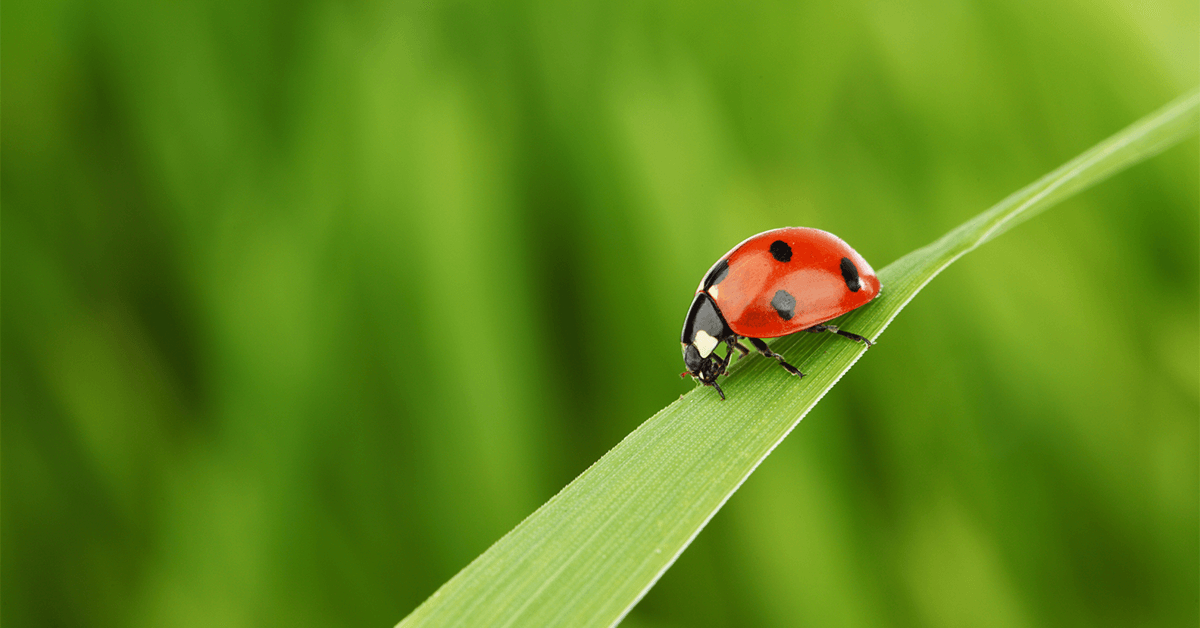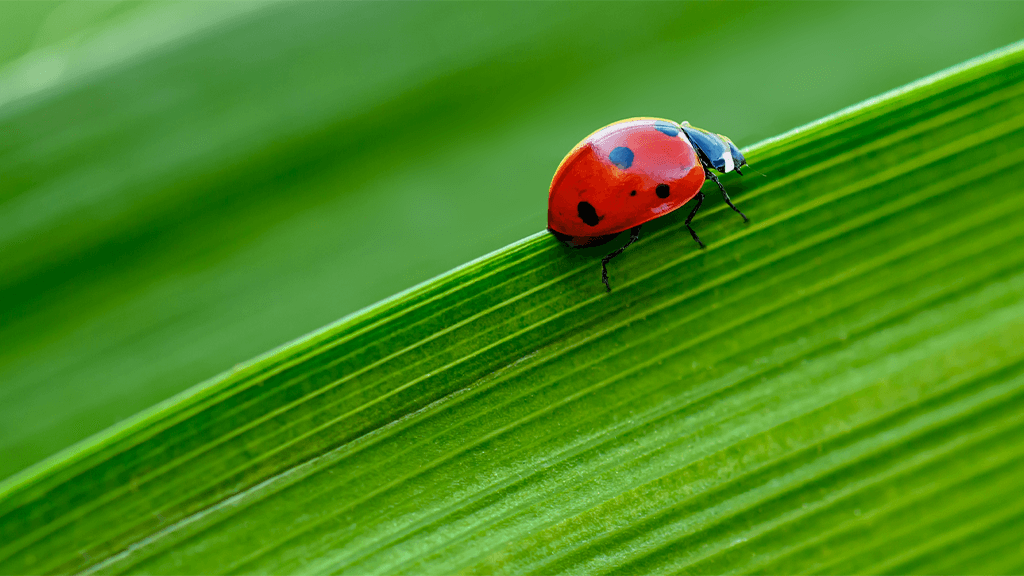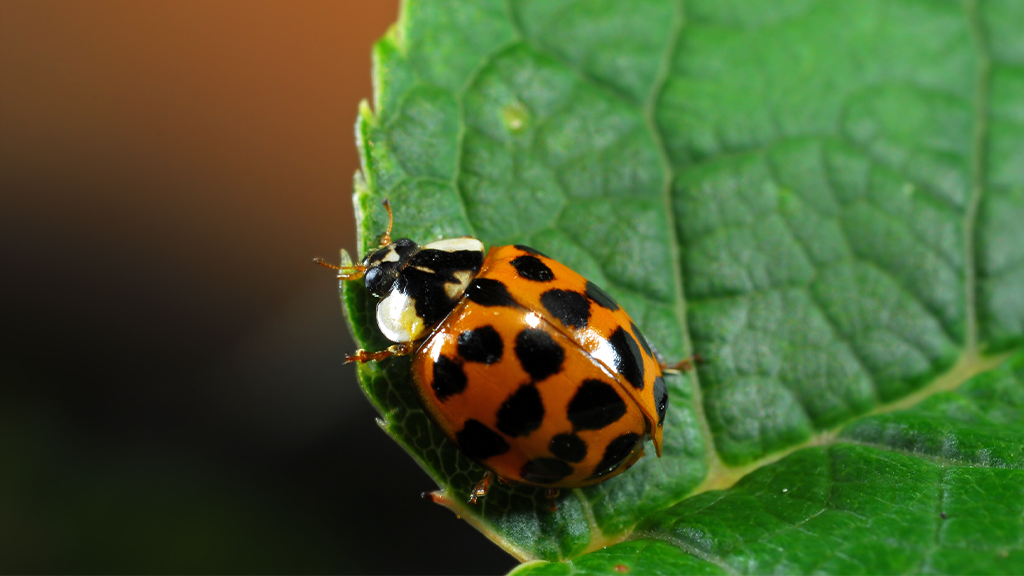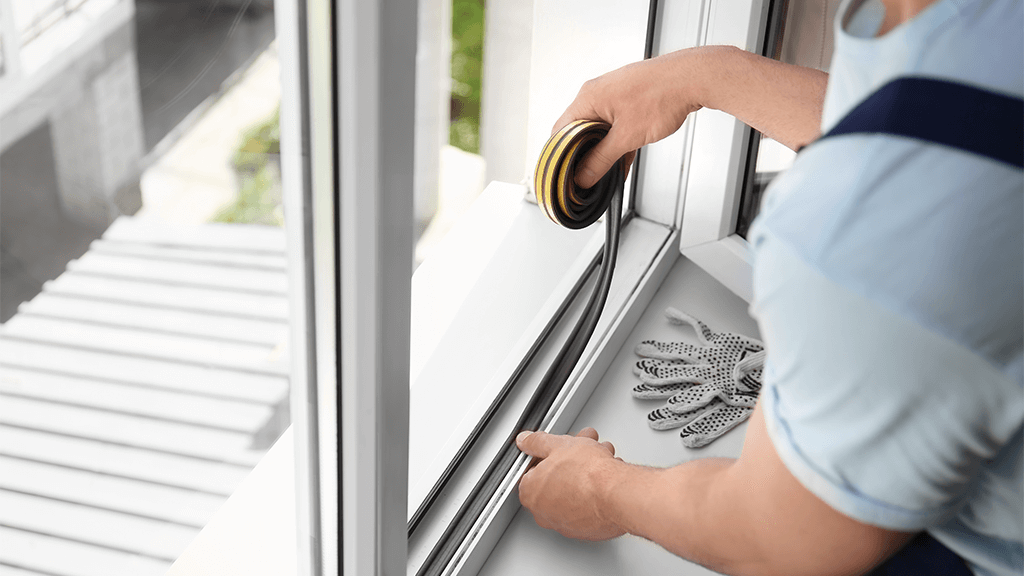All About Ladybugs!

Ladybugs are a gardener’s friend and a threat to no one, except for maybe the pests they like to consume. However, the ladybug’s lookalike is an unwelcome guest to gardeners and homeowners. This “evil twin” is the Asian lady beetle, and it infiltrates homes, bites, and produces a foul-smelling odor. But don’t worry—we’ve got the scoop on all things ladybug and can help you tell the difference between the good guys and the bad guys.
WHAT IS A LADYBUG?
A native ladybug is part of a group of 6,000 beetles that are similar in color and markings. Also referred to as ladybird beetles and lady beetles, ladybugs can be found all across the United States.
Ladybug eggs are tiny and usually a bright yellow-orange color. Eggs are laid in clusters of 5-30 and usually located near colonies of the insects they eat. Like many beetles, ladybugs go through a life cycle of four stages: egg, larva, pupa, and adult. Ladybugs feed on most soft-bodied garden pests, including aphids, spider mites, scale insects, and whiteflies.
Adult native ladybugs (a.k.a. the good ones) have a round or oval shape and sport bright colors that can range from red to pink and even yellow. The number of black spots on their wings can also vary.
Asian lady beetles are similar in color (ranging from tan to orange and even red) and shape, making it difficult to distinguish between the two species. Wondering how to tell the difference? Asian lady beetles have a black M-shaped marking behind their heads that native ladybugs do not.
WHAT’S SO BAD ABOUT ASIAN LADY BEETLES?
Asian lady beetles are an invasive ladybug species that was introduced to North America in 1919 in an effort to control the aphid population. While they do eat many common garden pests, this non-native species has several cons that make them an unfavorable addition to your yard.
AGGRESSION
While an insect the size of a pencil eraser doesn’t normally strike fear into the hearts of most people, the Asian lady beetle is known to bite. While not a significant bite (more like a pinch), in some cases it can cause an allergic reaction. Other reactions have also been noted when people touch these bugs and then touch their face or eyes.
The Asian lady beetle is also known to kill native ladybug species and other competitors, potentially eliminating the bugs you want in your garden.
INVASIVE
This species usually emerges from their winter hibernation spots when spring temperatures warm, and they remain active until late fall. Swarms of Asian lady beetles can be spotted between September and November, depending on the weather in a particular area. Though ladybugs do not build nests, they will seek out and settle into spots where they feel safe and can stay warm, such as in open siding, crevices in attics, windowsills, and other spaces in homes.
While having a few ladybugs flying around rooms and crawling on walls may not concern some homeowners, Asian lady beetles can multiply rapidly and make quite the mess if stuck indoors.
GENERAL NUISANCE
In addition to biting humans and invading homes, Asian lady beetles secrete a yellowish, smelly fluid if threatened. This fluid can stain walls, furniture, and fabrics.
While uncommon, Asian lady beetles can also infest dogs’ mouths. This can happen when swarms are searching for warm places to spend the winter. They can attach to the roof of a dog’s mouth, making it very uncomfortable.
 PREVENTING HOME INVASIONS
PREVENTING HOME INVASIONS
Native ladybugs are beneficial to gardens and are great at controlling certain pests, so trying to eliminate the ladybugs in your yard is not recommended.
To keep ladybugs from coming indoors, seal all cracks and open crevices where they could enter. Pay close attention around doors, window screens, and vents. Ladybugs can be removed by hand and released outdoors. Alternatively, you can vacuum them up or capture them on sticky tape. Place captured bugs in the freezer for at least three hours and then submerge them in soapy water.
If any Asian lady beetles find their way inside, avoid swatting at or crushing them. Doing this could cause them to secrete the unpleasant yellow fluid mentioned earlier. Instead, the soapy water method described above will also work for Asian lady beetles. After you’ve removed the Asian lady beetles, scrub the areas where you found the swarms with soapy water. The soap smell will overpower the pheromones that encourage other Asian lady beetles to congregate.
Looking to increase your native ladybug population outdoors? You can encourage native ladybugs into your garden by planting pollen-rich flowers that are yellow or white. If enough native ladybugs take up a space, it will push the Asian lady beetle population out.
Have more questions about ladybugs or insects beneficial to a garden? Give us a call for more information.



 PREVENTING HOME INVASIONS
PREVENTING HOME INVASIONS